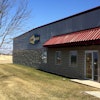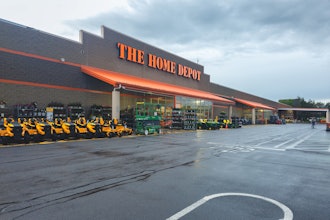WASHINGTON (AP) — Businesses requested more airplanes, autos, and oil drilling equipment in May The jump in factory orders after a sluggish spring suggests supply disruptions stemming from the Japan crisis are fading.
Factory orders rose 0.8 percent in May, the Commerce Department said Tuesday. That followed a downwardly revised drop of 0.9 percent in April.
The increase pushed factory orders to $445.3 billion. That's almost 32 percent higher than the low point during the recession, reached in March 2009.
Much of the increase was driven by a 36.5 percent increase in orders for aircraft, a volatile category. But there were also signs of strength in areas that had slowed sharply in the previous month.
Auto and auto parts orders rose 2 percent. And a measure of business investment rose 1.6 percent, after falling 0.4 percent the previous month. Companies invested more in computers and equipment.
Orders for so-called nondurable goods, such as food, clothing, oil, and plastics, fell 0.2 percent in May. But that was partly because oil prices dropped.
Until this spring, manufacturing had been one of the strongest sectors of the economy since the recession ended two years ago.
Economists largely blamed the weak period on high gas prices and the impact of the March 11th earthquake in Japan, which led to a parts shortage that has hampered U.S. manufacturers.
Those factors appear to be easing. Gas prices have come down since peaking in early May. And the manufacturing sector expanded at a faster pace in June after slowing sharply in May, according to the Institute of Supply Management.
"There are encouraging signs that the second half will likely to get better, particularly for manufacturers," said Ryan Sweet, an economist at Moody's Analytics.
A recovery in the auto sector is one reason production is picking up. Japanese automakers with plants in the United States, such as Toyota Motor Corp., Honda Motor Co. and Nissan Motor Co., sharply cut production in the spring. But they are restoring output. Toyota executives say their North American factories will be back to 100 percent by September.
Reports from the major automakers last week showed that sales rose 7 percent in June, compared to a year ago.
Busier auto plants would help boost the economy in the second half of this year. The economy grew at a 1.9 percent annual pace in the January-March quarter. Most economists expect a similarly weak pace of growth in the April-June quarter.
The economy is expected to grow at a 3.2 percent in the second half of this year, according to an Associated Press survey of 38 top economists.
Growth must be stronger to significantly lower the unemployment rate, which was 9.1 percent last month. The economy would need to grow 5 percent for a whole year to significantly bring down the unemployment rate. Economic growth of just 3 percent a year would hold the unemployment steady and keep up with population growth.
Employers added only 54,000 net new jobs in May, much slower than the average gain of 220,000 per month in the previous three months.
The government reports Friday on hiring data in June. Economists expect the economy added only 90,000 jobs and the unemployment rate was unchanged, according to survey by FactSet.


















